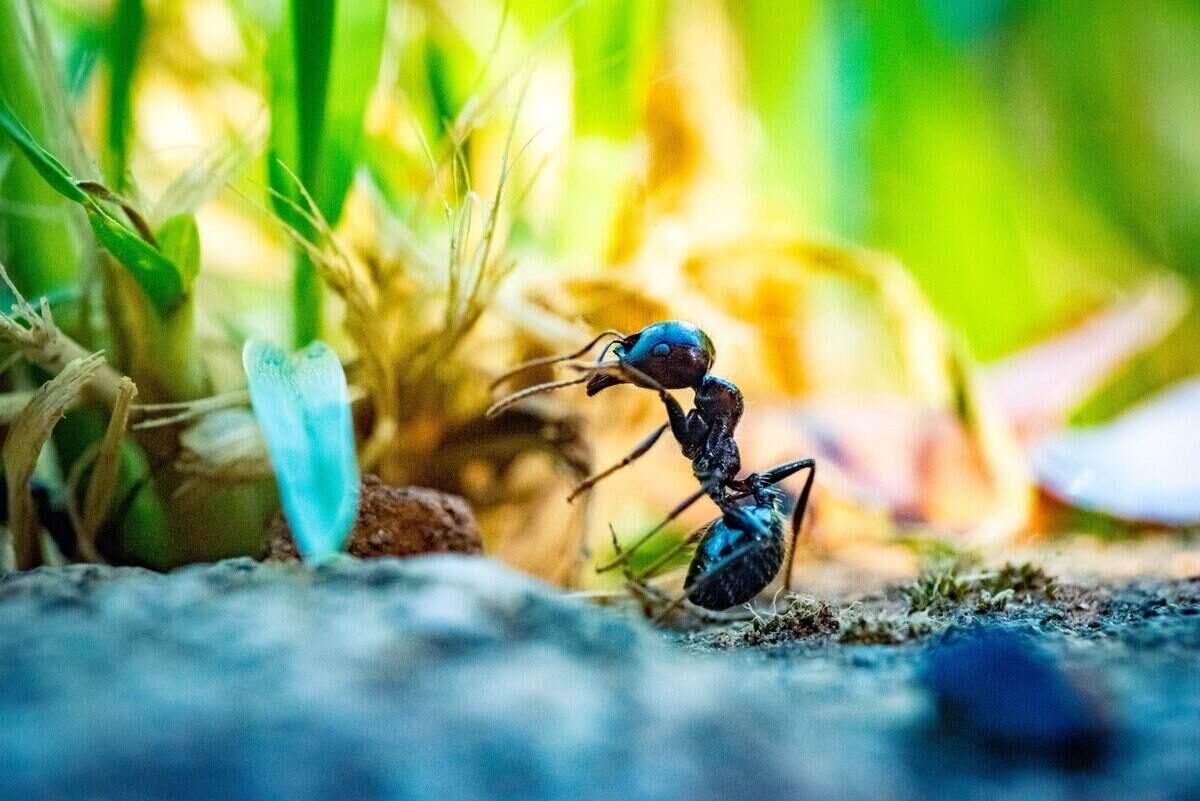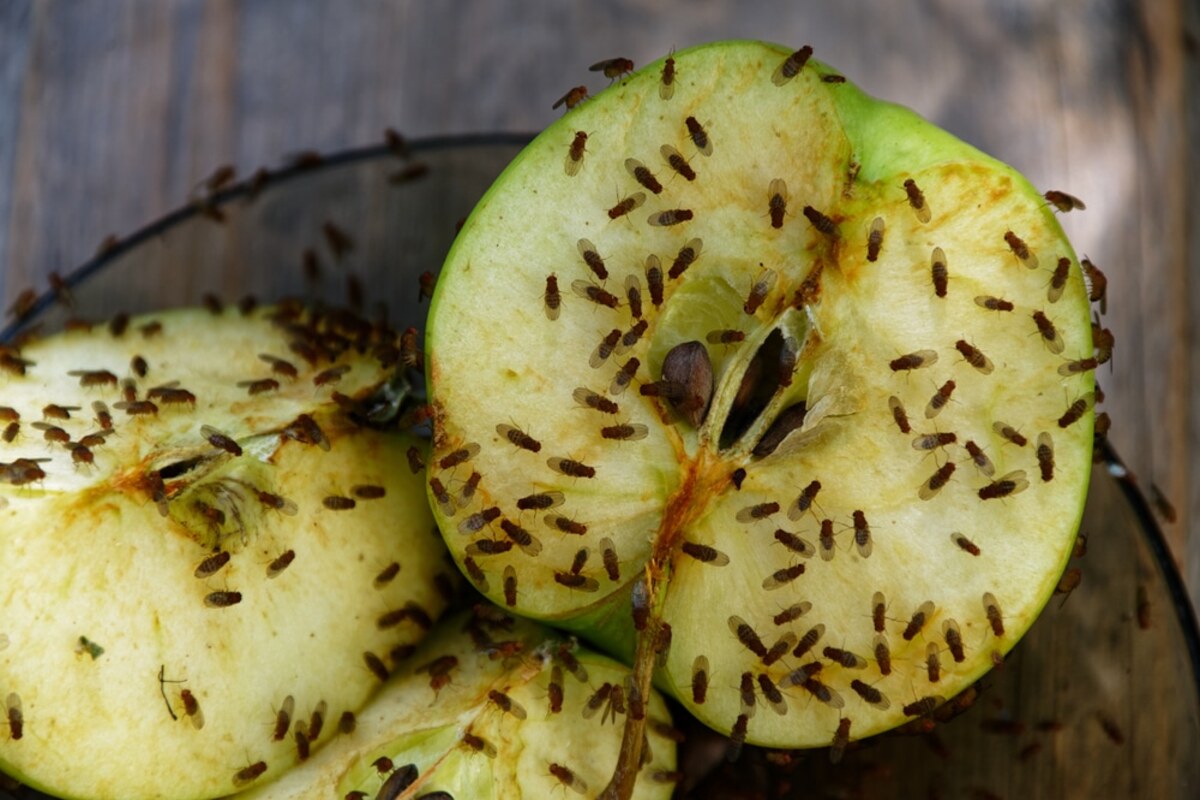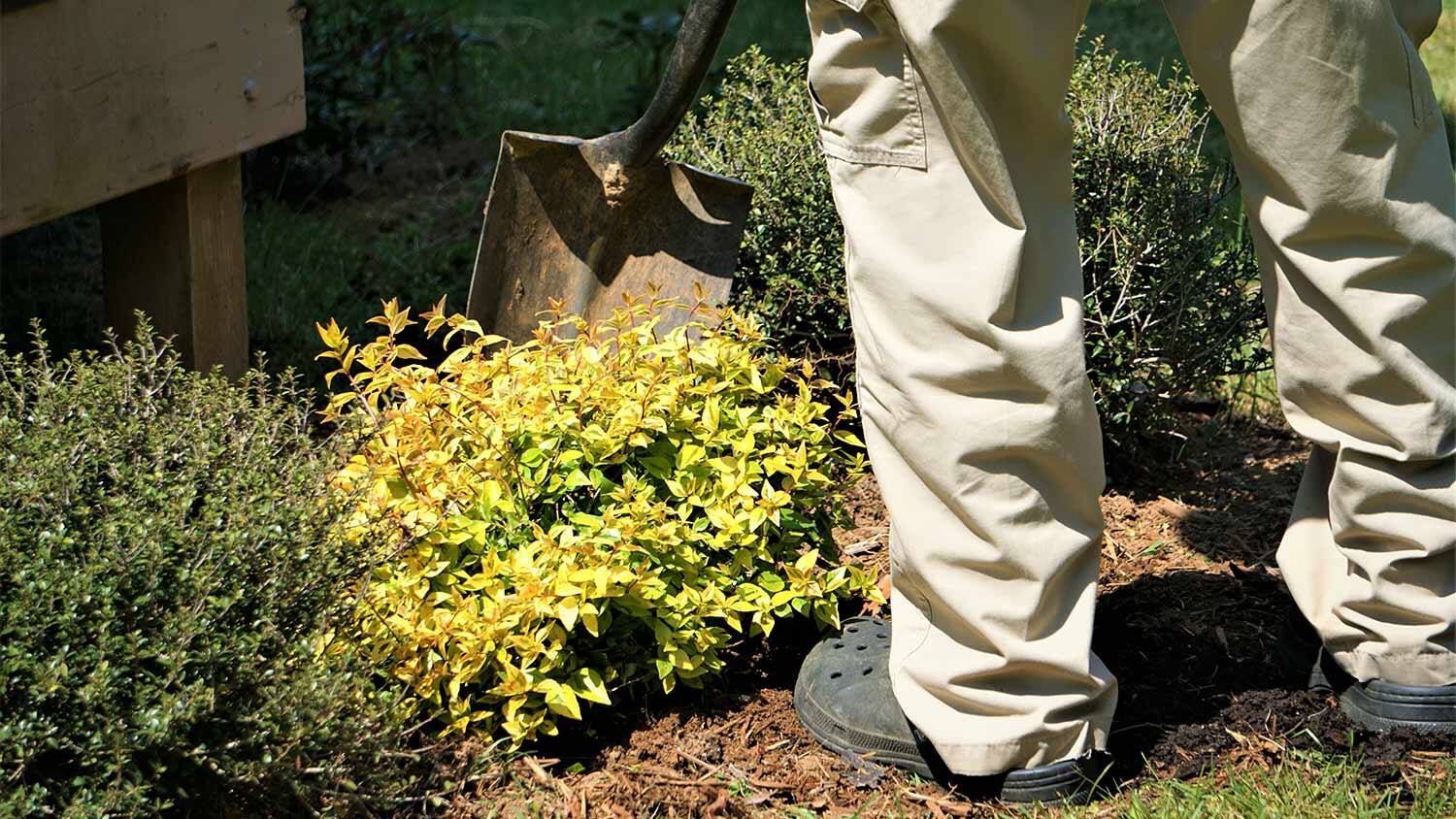Home>Gardening Tips and Tricks>Problem Solving>How To Get Rid Of Soil Gnats


Problem Solving
How To Get Rid Of Soil Gnats
Published: February 6, 2024
Learn effective problem-solving techniques to eliminate soil gnats and keep your plants healthy. Discover expert tips and solutions for getting rid of these pesky pests.
(Many of the links in this article redirect to a specific reviewed product. Your purchase of these products through affiliate links helps to generate commission for Chicagolandgardening.com, at no extra cost. Learn more)
Table of Contents
**
Introduction
**
Soil gnats, also known as fungus gnats, are tiny flying insects commonly found in and around houseplants. While they are not harmful to humans, these pesky pests can wreak havoc on the health of indoor plants. The adult gnats are relatively harmless, but their larvae feed on organic matter in the soil, potentially causing damage to plant roots. If left unaddressed, a soil gnat infestation can quickly spiral out of control, leading to stunted plant growth and overall decline in plant health.
These small, dark-colored insects are often mistaken for fruit flies due to their similar appearance and behavior. However, unlike fruit flies, soil gnats are specifically attracted to moist potting soil, making indoor plants the perfect breeding ground for these nuisances. Understanding how to identify, prevent, and control soil gnats is essential for maintaining the well-being of your beloved houseplants.
In this comprehensive guide, we will delve into the various methods for identifying soil gnats, implementing preventive measures, and utilizing natural and chemical remedies to combat these persistent pests. By familiarizing yourself with the characteristics and habits of soil gnats, you can effectively mitigate their presence and safeguard the vitality of your indoor greenery.
Identifying Soil Gnats
Recognizing soil gnats is the first step in addressing a potential infestation. These tiny insects, measuring about 1/8 inch in length, are often seen hovering around potted plants, particularly when the soil is disturbed or watered. Their slender bodies and long legs distinguish them from other flying pests commonly found indoors. The key characteristics for identifying soil gnats include:
- Appearance: Soil gnats are small, dark-colored flies with long legs and transparent wings. Their delicate build allows them to move swiftly and hover above the soil surface.
- Behavior: Adult soil gnats are frequently observed in the vicinity of houseplants, especially when the soil is moist. They are attracted to decaying organic matter and thrive in environments with high humidity levels.
- Larvae: The larvae of soil gnats, which reside in the soil, are translucent and legless, with a distinct black head. These tiny, worm-like creatures feed on organic matter and plant roots, potentially causing damage to the plant’s health.
It’s important to differentiate soil gnats from other flying insects commonly found indoors, such as fruit flies and drain flies. While fruit flies are drawn to overripe fruits and vegetables, drain flies tend to congregate near sink drains and other damp areas. By closely observing the behavior and physical attributes of the insects around your houseplants, you can accurately identify the presence of soil gnats and take appropriate measures to address the issue.
Prevention and Control Measures
Implementing proactive strategies to prevent and control soil gnats is crucial for maintaining the health and vigor of indoor plants. By incorporating the following measures into your plant care routine, you can effectively minimize the risk of soil gnat infestations:
- Allow Soil to Dry: Soil gnats thrive in moist environments, so allowing the top layer of the soil to dry out between waterings can deter these pests from laying their eggs and establishing a breeding ground.
- Use Well-Draining Soil: Opt for well-draining potting soil to discourage excessive moisture retention, creating an inhospitable environment for soil gnat larvae.
- Avoid Overwatering: Overwatering not only compromises the root health of plants but also creates an ideal habitat for soil gnats. Be mindful of the watering needs of each plant and avoid excessive moisture accumulation in the soil.
- Remove Organic Debris: Regularly remove fallen leaves, dead plant matter, and other organic debris from the soil surface to eliminate potential food sources for soil gnat larvae.
- Utilize Yellow Sticky Traps: Placing yellow sticky traps near infested plants can help capture adult soil gnats, reducing their population and preventing further reproduction.
- Enhance Air Circulation: Improving air circulation around plants by using fans or adjusting the positioning of indoor plants can deter soil gnats, as they prefer stagnant, humid conditions.
- Quarantine New Plants: When introducing new plants to your indoor collection, isolate them for a period to monitor for any signs of soil gnats or other pests before integrating them with existing plants.
By integrating these preventive measures into your plant care routine, you can create an inhospitable environment for soil gnats, mitigating the risk of infestations and promoting the overall well-being of your indoor greenery.
Natural Remedies for Soil Gnats
When combatting soil gnats, natural remedies offer effective and environmentally friendly solutions to address infestations without resorting to chemical treatments. By leveraging the power of natural ingredients and strategic interventions, you can effectively manage soil gnat populations and restore the health of your indoor plants. Here are several natural remedies to consider:
- Diatomaceous Earth: Sprinkling food-grade diatomaceous earth on the soil surface can dehydrate and eliminate soil gnat larvae, disrupting their life cycle and preventing further infestations.
- Cinnamon Powder: Applying a layer of cinnamon powder on the soil surface acts as a natural fungicide and deters soil gnats, while also preventing fungal growth in the moist environment.
- Sticky Traps: Homemade sticky traps using bright yellow index cards coated with non-toxic adhesive can effectively trap adult soil gnats, reducing their numbers and curbing their reproductive activity.
- Hydrogen Peroxide Solution: Diluting hydrogen peroxide with water and applying it to the soil can help kill soil gnat larvae and aerate the soil, promoting root health and deterring future infestations.
- Neem Oil: A natural insecticide, neem oil can be diluted and applied to the soil to target soil gnat larvae and disrupt their development, effectively controlling infestations without harming beneficial soil organisms.
- Beneficial Nematodes: Introducing beneficial nematodes to the soil can help eliminate soil gnat larvae, providing a natural and sustainable solution to combat infestations.
- Allowing Soil to Dry: Allowing the soil to dry out between waterings can naturally disrupt the life cycle of soil gnats, inhibiting their ability to reproduce and thrive in the soil.
By incorporating these natural remedies into your pest management approach, you can effectively address soil gnat infestations while safeguarding the well-being of your indoor plants and maintaining an eco-friendly environment within your living space.
Chemical Treatments for Soil Gnats
While natural remedies offer effective solutions for controlling soil gnats, there are instances where chemical treatments may be necessary to address severe infestations and prevent widespread damage to indoor plants. When considering chemical interventions, it is essential to prioritize the safety of both plants and inhabitants, opting for products specifically formulated for indoor use and following application guidelines meticulously. Here are several chemical treatments commonly utilized for soil gnat control:
- Insecticidal Soap: Formulated with natural fatty acids, insecticidal soap can effectively target soil gnat larvae and adult gnats, disrupting their cellular membranes and leading to mortality.
- Bacillus Thuringiensis (BT): This naturally occurring soil bacterium, when applied to the soil, releases toxins that specifically target the larvae of soil gnats, effectively controlling their population without harming beneficial organisms.
- Pyrethrin-Based Sprays: Derived from chrysanthemum flowers, pyrethrin-based sprays can be used to directly target adult soil gnats, providing rapid knockdown and control of the pest population.
- Systemic Insecticides: Applied to the soil or foliage, systemic insecticides are absorbed by plants and translocated throughout their vascular systems, targeting soil gnat larvae and adult gnats upon ingestion, ultimately leading to their demise.
- Botanical Oils: Essential oils such as neem oil and rosemary oil, when properly diluted and applied, can serve as effective botanical insecticides, targeting soil gnats while minimizing potential harm to non-target organisms.
When utilizing chemical treatments for soil gnat control, it is imperative to carefully read and adhere to the instructions provided by the product manufacturer. Additionally, it is advisable to consider the potential impact on beneficial insects and organisms within the indoor ecosystem, striving to minimize collateral damage while addressing the soil gnat infestation effectively.
Before resorting to chemical treatments, it is recommended to exhaust natural remedies and preventive measures to manage soil gnat populations. However, in cases of severe infestations or persistent pest activity, consulting with a pest control professional or horticultural expert can provide valuable guidance in selecting and applying appropriate chemical treatments to safeguard the health of indoor plants and maintain a balanced indoor environment.
Conclusion
Effectively managing soil gnats in indoor plant environments requires a multifaceted approach that encompasses identification, prevention, and targeted interventions. By familiarizing yourself with the characteristics and behavior of soil gnats, you can promptly address potential infestations and mitigate their impact on plant health. Implementing preventive measures, such as allowing the soil to dry between waterings, using well-draining soil, and enhancing air circulation, serves as a proactive strategy to create an inhospitable environment for soil gnats, minimizing the risk of infestations.
When combatting soil gnats, natural remedies offer environmentally friendly solutions to address infestations without resorting to chemical treatments. From diatomaceous earth to cinnamon powder and hydrogen peroxide solutions, these natural interventions provide effective means of controlling soil gnat populations while promoting the well-being of indoor plants. Additionally, the strategic use of yellow sticky traps and beneficial nematodes can aid in capturing adult gnats and targeting soil gnat larvae, contributing to comprehensive pest management.
In cases where natural remedies may not suffice, the judicious application of chemical treatments, such as insecticidal soap, Bacillus thuringiensis, and botanical oils, can provide targeted control of soil gnats while minimizing potential harm to beneficial organisms. Prioritizing the safety of plants and inhabitants, following application guidelines, and considering the potential impact on the indoor ecosystem are essential considerations when integrating chemical interventions into soil gnat management strategies.
By incorporating a combination of preventive measures, natural remedies, and, when necessary, carefully selected chemical treatments, you can effectively combat soil gnats and safeguard the vitality of your indoor plants. Maintaining vigilance and promptly addressing signs of soil gnat activity are key to preserving the health and beauty of your indoor greenery, creating a thriving and pest-free environment within your living space.








